When facing procedures or treatments that involve needles, laser devices, or other forms of skin penetration, many people experience anxiety and pain. The search for the strongest skin numbing cream is a common goal among patients who want better pain relief. Understanding the science behind these creams, the types of topical anesthetics they contain, and the best practices for application can help you select the right product. With the proper numbing cream, you can achieve effective pain relief, reduce discomfort, and increase your confidence before undergoing various procedures.
In this article, we will discuss how numbing creams work, what differentiates various topical anesthetics, the importance of choosing the right cream, and how to use it for the best results. We will also examine potential side effects, precautions, and how these creams can help for specific treatments, including laser hair removal, tattoos, and minor surgeries. Additionally, we will highlight some of the strongest numbing creams on the market, explain how compounding pharmacy services create custom blends, and answer frequently asked questions.
Understanding Numbing Creams and How They Block Pain Signals
Numbing creams, which fall under the umbrella of topical anesthetics, have long been used to help numb the skin surface. These creams contain anesthetic ingredients that temporarily reduce the sensation of pain, allowing patients to undergo various procedures with less fear and distress. By applying the right numbing cream before a treatment, it is possible to numb the targeted area and minimize discomfort during injections, laser treatments, or other interventions.
Numbing creams are popular among patients with sensitive skin and those who may have experienced pain during previous procedures. They are especially helpful for people who feel anxious about needles or surgical tools. When used correctly, numbing creams can improve overall patient satisfaction, help achieve better outcomes, and contribute to a more positive experience.
Numbing creams work by targeting the nerves in the skin. When you apply a numbing cream to the surface, the topical anesthetic it contains penetrates the outer layers of the skin and influences the nerves responsible for transmitting pain signals to the brain. By slowing or blocking these signals, the cream creates a numbed sensation that helps reduce or even temporarily eliminate pain.
The process involves anesthetic ingredients such as lidocaine and benzocaine, which can be part of a single formulation or used in combination. Lidocaine, a widely recognized topical anesthetic, is known for its strong numbing abilities and has been used for many years. Benzocaine is another example, commonly found in various over-the-counter creams. With these anesthetic ingredients at work, the skin area becomes numbed, reducing the overall pain response.
Types of Topical Anesthetics
Topical anesthetics come in different chemical classifications. The two main categories are amide and ester anesthetics. Understanding these differences helps patients and healthcare providers choose the best product for pain relief.
Amide vs. Ester Formulations
Amide-type topical anesthetics, such as lidocaine, are known for their lower risk of allergic reactions. They tend to provide consistent numbing results and are frequently found in the strongest numbing creams available. Ester-type anesthetics, like benzocaine, are more prone to cause allergic reactions and may not last as long. However, benzocaine can still deliver effective numbing when used properly.
Choosing between amide and ester anesthetics often depends on patient history, procedure type, and how quickly pain relief is needed. Lidocaine-based creams are typically favored for their reliability, making them a common choice in many procedures requiring surface anesthesia. Benzocaine, on the other hand, might be suitable for minor irritations like insect bites, mild burns, or itching from external causes.
The Popularity of BLT Cream
BLT cream, which stands for Benzocaine, Lidocaine, and Tetracaine, is a compounded topical anesthetic mixture widely used for achieving a stronger and more sustained numbing effect. This combination leverages each anesthetic’s strengths to deliver superior results. BLT cream is often prepared in a compounding pharmacy, ensuring a common formulation that suits individual patient needs.
Because BLT cream contains multiple anesthetic ingredients, it can produce effective pain relief across a wide range of procedures. Dermatologists, tattoo artists, and cosmetic professionals often rely on BLT cream for laser resurfacing, waxing, or procedures that involve the entire leg or large areas of the body. With a higher concentration of lidocaine and other agents, BLT cream can penetrate deeper into the skin, providing more thorough numbing for treatments that require a stronger solution.
Dermatologists have recommended BLT cream for many years, and it has achieved a reputation for providing strong and fast-acting numbing. Because it is often custom-made by a compounding pharmacy, BLT cream allows for adjustments in concentration or the addition of other anesthetic ingredients. This flexibility ensures that patients receive one cream tailored to their specific pain threshold, skin sensitivity, and treatment requirements.
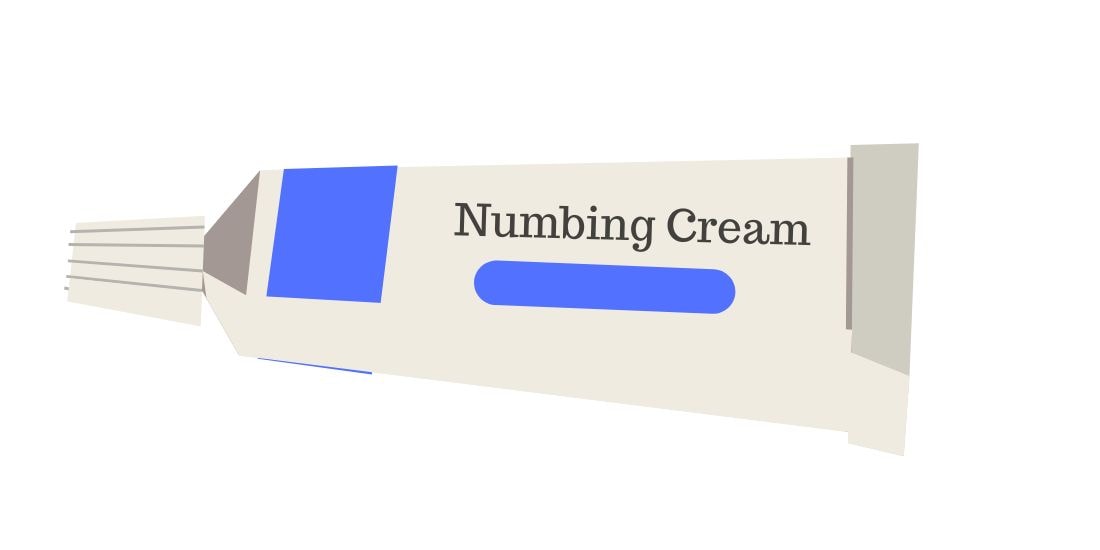
Choosing the Right Numbing Cream
Selecting the best numbing cream is not always a simple task. The ideal choice depends on multiple factors, including the type of procedure, individual skin sensitivity, and the presence of any known allergies. With so many creams on the market, understanding the differences in formulation, potency, and duration can help you find the best numbing cream that meets your needs.
Selection Based on Skin Type, Skin Sensitivity, and Allergies
When choosing a numbing cream, consider your skin type and any prior experiences of allergic reactions. If you know you have sensitive skin or a history of reacting poorly to certain anesthetics, consult a doctor or dermatologist before applying any new product. Ester anesthetics like benzocaine may carry a higher risk of allergic reactions, so patients with sensitive skin might prefer amide-type topical anesthetics.
The severity of the procedure also matters. For minor treatments like insect bites or small injections, a mild numbing cream may suffice. However, for more intense procedures such as laser resurfacing or minor surgery, a stronger cream with higher lidocaine concentration can provide better pain relief. Always consider your tolerance level, the area being treated, and any advice from a healthcare professional before making your final selection.
Application Tips for Maximum Effectiveness When Using Numbing Cream
To ensure that your chosen numbing cream works as intended, follow proper application guidelines. Applying too little may result in insufficient numbing, while using too much cream can increase the risk of adverse effects. Many creams come with detailed instructions, and carefully following them helps you get the best results.
Timing and Layering Techniques
The timing of application is crucial. In most cases, you should apply the numbing cream 30 minutes to an hour before the procedure. This allows the topical anesthetic to penetrate the skin and numb the nerves. A thin layer of cream is often enough; however, for larger areas or more painful treatments, you may need to apply a slightly thicker layer. Some professionals recommend covering the area with plastic wrap to help the cream penetrate more effectively. Always follow the product’s instructions, as different creams have unique guidelines.
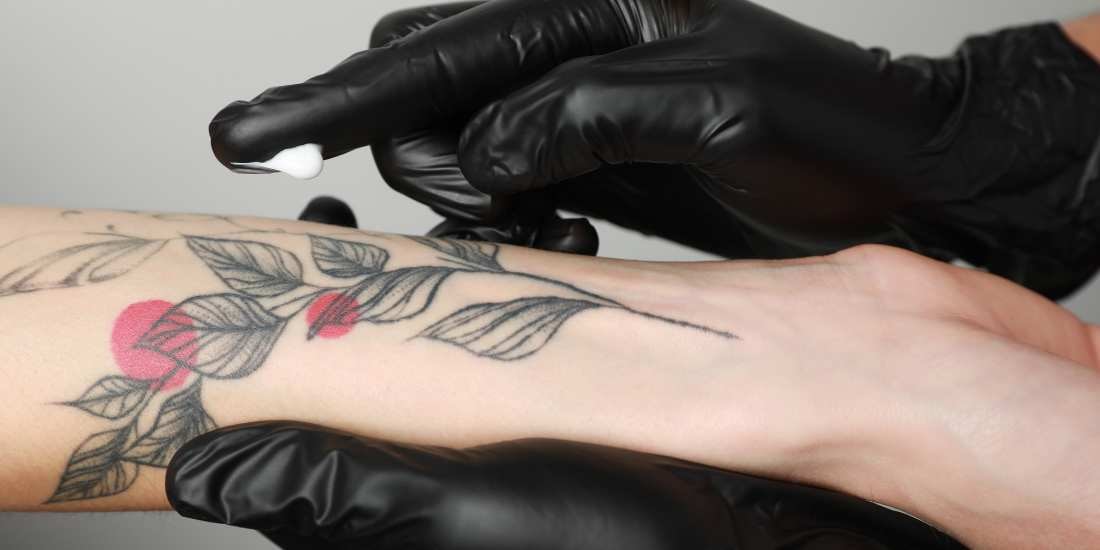
Layering techniques involve applying the cream, waiting a short period, then applying another layer if recommended. This method can enhance the numbing effect without overusing the cream. Remember that exceeding the recommended dosage or leaving the cream on for too long can cause swelling, itching, or other unwanted reactions. Keep in mind that most numbing creams are designed for temporary use and should be removed before the procedure begins to prevent interference with the treatment process.
Precautions and Possible Side Effects of Using Numbing Cream
While numbing creams generally provide safe and reliable pain relief, there are precautions to consider. Applying the cream too liberally or on very large areas of the body can increase the likelihood of systemic absorption and subsequent adverse effects. Patients should always adhere to recommended guidelines and consult a doctor or pharmacist if unsure.
Recognizing Systematic Toxicity
Systematic toxicity can occur if too much of the topical anesthetic enters the blood. Symptoms may include dizziness, confusion, changes in heart rate, or difficulty breathing. Patients who experience any unusual symptoms after applying numbing creams should remove the cream immediately and seek medical attention. Using the recommended amount, avoiding broken or inflamed skin, and not applying to an entire leg or extremely large area at once reduces the risk of toxicity. If you are uncertain, ask a pharmacist or dermatologist for guidance.

Methemoglobinemia and When to Avoid Use
Methemoglobinemia is a condition in which the blood’s ability to carry oxygen is diminished. Certain topical anesthetics, including benzocaine, have been linked to this condition in rare cases. Symptoms may include blue-tinged skin, dizziness, headache, and difficulty breathing. Individuals with known sensitivity or a history of blood disorders should avoid certain creams or seek medical advice before use. Ensuring the cream is from a reputable source, possibly a compounding pharmacy, and following all instructions can minimize this risk.
Numbing Creams for Specific Procedures
Numbing creams are commonly employed for a variety of procedures. By applying the right cream beforehand, patients can experience less pain and more comfort throughout treatments. Whether it’s laser hair removal, getting a tattoo, minor surgery, or other skin-related treatments, selecting the right numbing cream can make a significant difference.
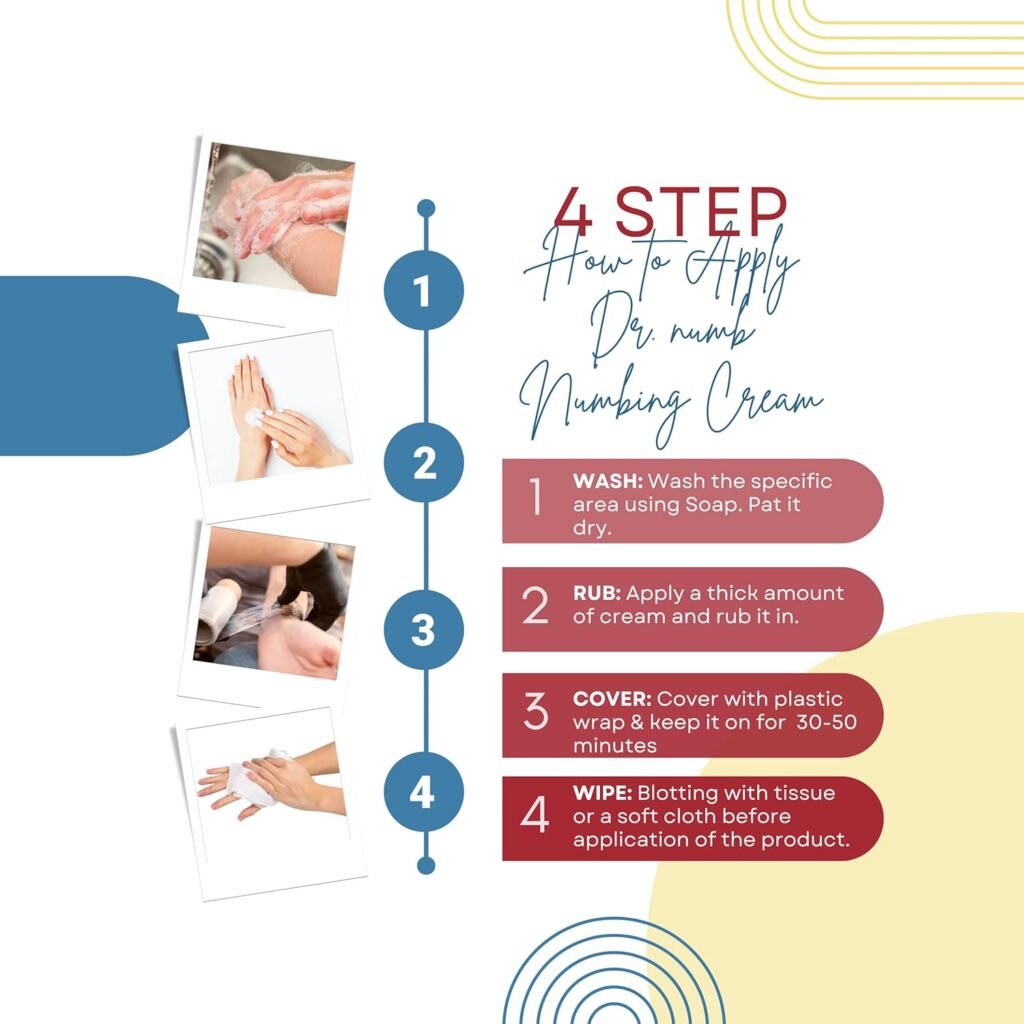
Laser Hair Removal, Tattooing and Minor Surgery
Laser hair removal involves using concentrated beams of light to target hair follicles. This procedure can be painful for some individuals, particularly those with sensitive skin. Applying a topical anesthetic cream, such as one containing lidocaine, before the laser hair removal session helps numb the area and reduce pain. By numbing the skin thoroughly, patients can tolerate the procedure more easily and achieve better outcomes.
Tattoos involve injecting ink into the skin using needles. Although some individuals find the pain manageable, others seek ways to reduce it. Applying numbing cream before tattooing can help numb the area, making the experience more tolerable. Some tattoo artists recommend using numbing creams with a high lidocaine concentration to ensure that the skin remains numb during the initial stages of tattooing. However, it’s important to follow instructions carefully, as overuse can interfere with the ink’s absorption or cause swelling.
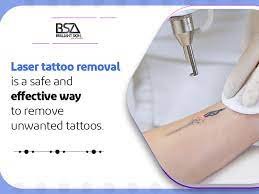
Minor surgical procedures, such as mole removal or skin biopsies, often cause pain and anxiety. A topical anesthetic cream can be applied beforehand to numb the area, reducing pain signals sent to the brain. This helps patients feel calmer and allows the doctor to perform the minor surgery more efficiently. Since these procedures may be relatively quick, using a powerful cream with lidocaine ensures that the numbness lasts long enough to cover the entire duration.
The Strongest Numbing Creams on the Market
When seeking the strongest numbing creams, look for those containing a high concentration of lidocaine. Lidocaine is a powerful topical anesthetic renowned for its ability to numb effectively. Some creams contain up to 10.56% lidocaine, providing a more potent numbing effect for pain relief. Alongside lidocaine, benzocaine and tetracaine may be included in certain formulas to create a strong combination that targets different points of the pain pathway.
High Lidocaine Content and BLT Mixtures
High lidocaine content is often what distinguishes the strongest creams from standard over-the-counter products. BLT mixtures are a prime example, containing benzocaine, lidocaine, and tetracaine in a single formulation. Such a combination delivers reliable and long-lasting numbness. These mixtures are frequently prepared at a compounding pharmacy, allowing customization to the patient’s needs. By adjusting the ratio of anesthetic ingredients, a compounding pharmacy can produce a cream that provides the desired duration and intensity of numbness.
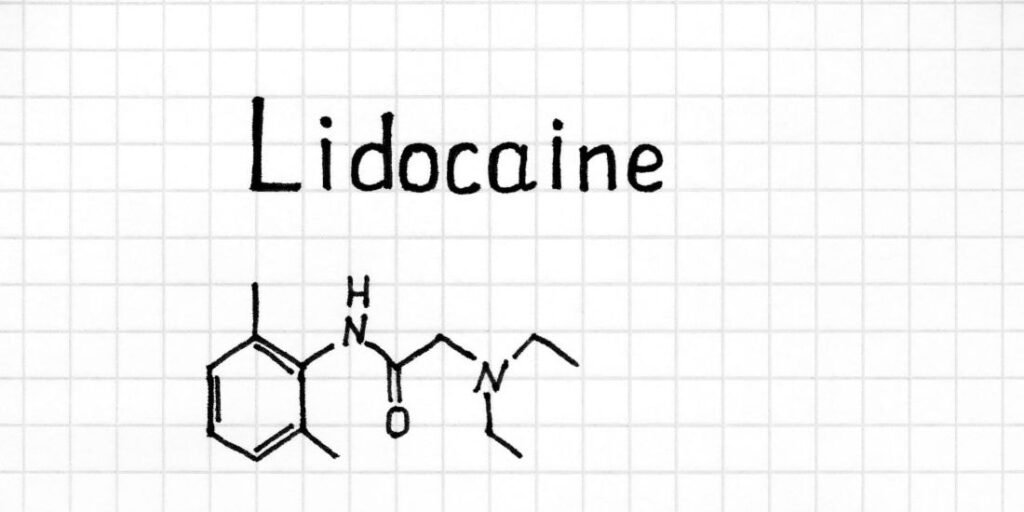
Many high-strength creams are not readily available over the counter and may require a prescription or to be purchased through a specialized pharmacy. Patients seeking a stronger numbing solution should consult their doctor or dermatologists who can recommend the appropriate cream. A cream with elevated lidocaine levels ensures the skin is thoroughly numbed before treatments like laser resurfacing, minor surgery, or intense injections. When high lidocaine content is properly administered, pain is significantly reduced, and the patient can feel more at ease throughout the procedure.
Recommended Products – Neo-Cain, J-Cain, Muchcaine
Some of the strongest numbing creams available include Neo-Cain, J-Cain, and Muchcaine. These creams are known for their high lidocaine concentrations and reliable numbing properties. Tattoo artists and other professionals have recommended these products for their consistent performance and ability to keep the skin numb during lengthy procedures. They are particularly useful when treating larger areas, as they help achieve uniform numbness that can be maintained over time.
When selecting from these options, check the product’s concentration of lidocaine and other anesthetic ingredients. The compounding pharmacy producing these creams often ensures a common formulation that meets safety standards. Always read the instructions, consider whether a prescription is needed, and purchase from a reputable source. Some patients prefer one cream over another due to personal sensitivity or the specific procedure being performed. Testing a small patch of skin before widespread application can help prevent adverse effects or allergic reactions.
Enhancing Comfort and Confidence with the Right Numbing Solutions
Choosing the appropriate numbing cream or creams can transform your experience during medically or cosmetically related treatments. By selecting a topical anesthetic with the right concentration of lidocaine, ensuring proper application techniques, and following professional guidance, pain can be minimized, and outcomes improved. Over the years, healthcare professionals, dermatologists, and tattoo artists have relied on these solutions to help patients feel at ease, reduce soreness, and ensure that procedures run smoothly.

Whether you are dealing with insect bites, minor burns, or more involved treatments like laser hair removal or tattooing, there is likely one cream that will meet your needs. For instance, if you need a milder option for insect-related discomfort, a bit cream designed for that purpose can provide temporary relief. If your goal is tackling more intensive procedures, a stronger formulation with high lidocaine content may be best. Remember to follow instructions carefully, consider any potential allergic reactions, and consult with a doctor before using any new product. By doing so, you can enjoy improved comfort, reduced pain, and greater confidence in the treatment process.
FAQ
How long does the numbing effect last when using a numbing cream?
The duration of the numbing effect can vary depending on the cream’s formulation, concentration of lidocaine, and how well it was applied. On average, the numbness may last between 30 minutes to a few hours. For procedures like laser resurfacing or tattooing, stronger creams or compounded mixtures may offer more prolonged relief. Over the counter creams usually provide shorter-lasting numbness, while a prescription product from a pharmacy may deliver a more sustained effect. For example, EMLA cream, which is FDA-approved, often provides reliable numbness for certain treatments. To ensure complete coverage of your scheduled procedure, apply the cream as directed and allow sufficient time for it to work.
Are prescription options better when using a numbing cream?
Prescription options can be more potent and provide longer-lasting numbness compared to over the counter products. A prescription numbing cream may contain higher concentrations of lidocaine or a combined formula of benzocaine, tetracaine, and lidocaine. These prescription-strength topical anesthetics are often preferred for more invasive procedures or when treating a larger portion of the body that must be numbed thoroughly. Consult with a doctor or dermatologist to see if a prescribed cream is suitable for your specific needs. Prescription-strength creams are frequently obtained from a compounding pharmacy, ensuring a tailored solution.
Can numbing creams improve mental comfort during procedures?
Yes, numbing creams can help reduce the anticipation of pain and improve mental comfort. Knowing that the skin will be numb allows patients to approach treatments such as piercing, waxing, or even injections more calmly. By minimizing the sensation of pain, numbing creams help the patient feel more at ease and lower anxiety levels. Whether dealing with minor burns, having an entire leg treated, or addressing simple irritations, choosing a suitable topical anesthetic can make a significant difference.
If mild relief is needed for everyday irritations like insect bites, applying a mild bit cream can offer gentle soothing. Bit cream is not as potent as prescription-strength options, but it can be found over the counter and is convenient for quick application. For more intensive procedures requiring stronger anesthesia, a properly prescribed cream may be preferred. Compounded formulations from a compounding pharmacy can be adjusted for higher lidocaine concentrations or other anesthetic ingredients, ensuring that pain is managed effectively. By selecting the right products, following instructions, and consulting a doctor when necessary, patients can experience procedures with minimal pain, reduced risk, and greater peace of mind.
